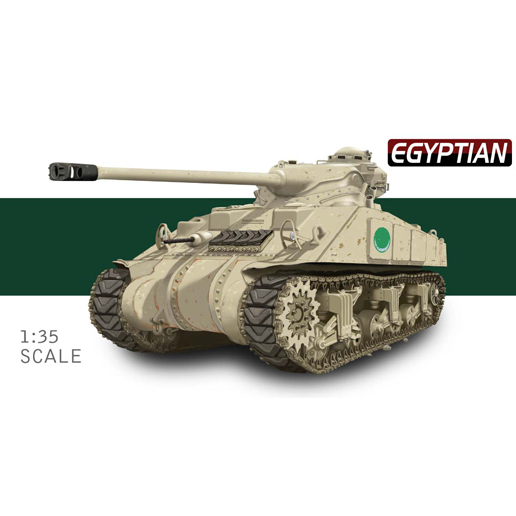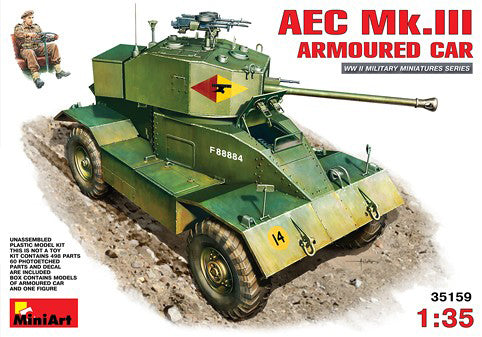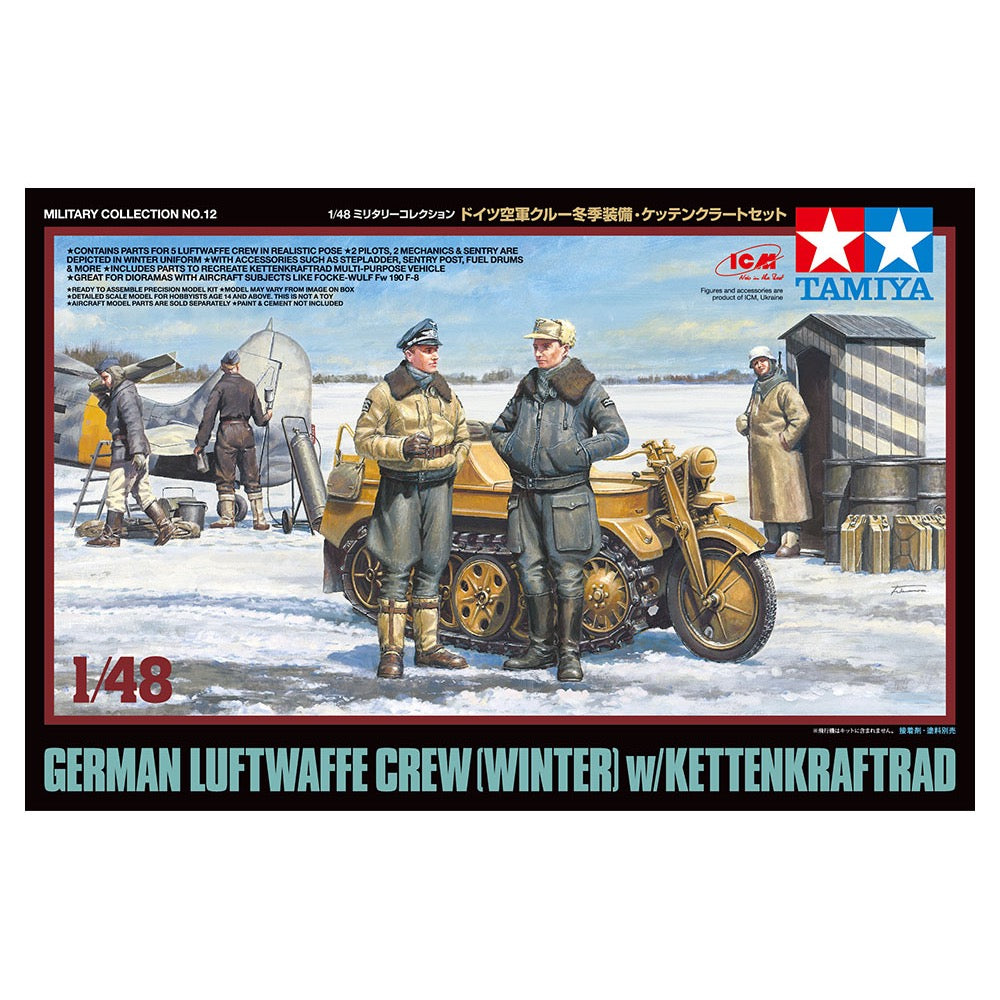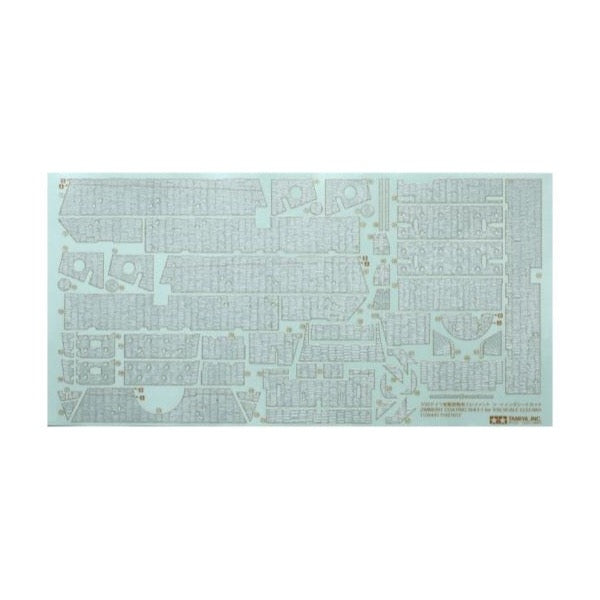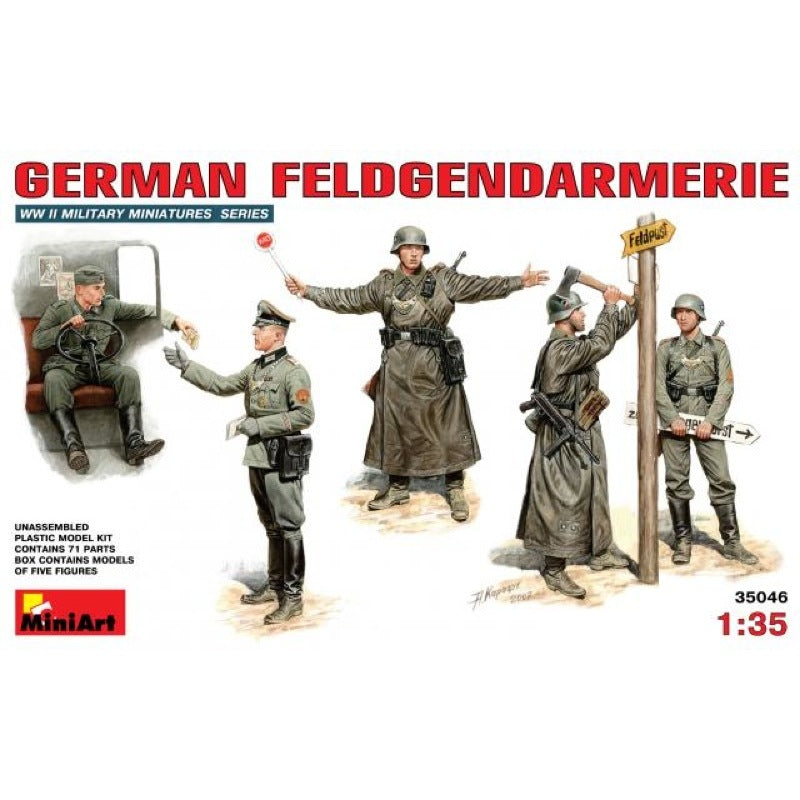
MiniArt 35046 1/35 German Feidgendarmerie
5.00
$
<p>High quality plastic model figure kit set in authentic 1/35 scale. Paint and glue not included. Requires assembly and painting. For intermediate to advanced skill modellers.</p>

Tamiya 32595 1/48 U.S. M4A3E8 Sherman Easy Eight Tank
16.00
$
<h3>An Easy Ride!</h3>
<p>The U.S. M4 Sherman tank was undoubtedly one of the symbols of WWII, deployed in great quantities and numerous variants to counter the potent threat of German armor.</p>
<p>One such variant was the M4A3E8, which was one of the final Sherman types and thus had the benefit of design improvements developed from experience in battle. These included a hardy welded late production hull, plus the welcome addition of the 76mm main gun. It was also fitted with new Horizontal Volute Spring Suspension (HVSS), and wider tracks, making for the significantly more comfortable ride that led to the M4A3E8's nickname of "Easy Eight".</p>
<p>They were thrown into their maiden operation in the Battle of the Bulge in December 1944 as part of the 4th Armored Division under General Patton's overall command, contributing to the relief of the besieged town of Bastogne and the eventual triumph of the Allies in the European Theater.</p>
<h3>Features</h3>
<ul>
<li>
<p>Length: 156mm, width: 62mm.</p>
</li>
<li>
<p>The form of a World War II M4A3E8 is accurately captured in compact 1/48 scale.</p>
</li>
<li>
<p>Superb detail across the model, notably on the HVSS, engine grilles and rear deflector.</p>
</li>
<li>
<p>T66 tracks are depicted in assembly form, with one-piece straight sections.</p>
</li>
<li>
<p>Interior weights give the model a realistically heavy feel.</p>
</li>
<li>
<p>Comes with a commander torso figure and 2 European Theater marking options.</p>
</li>
</ul>
<p> </p>
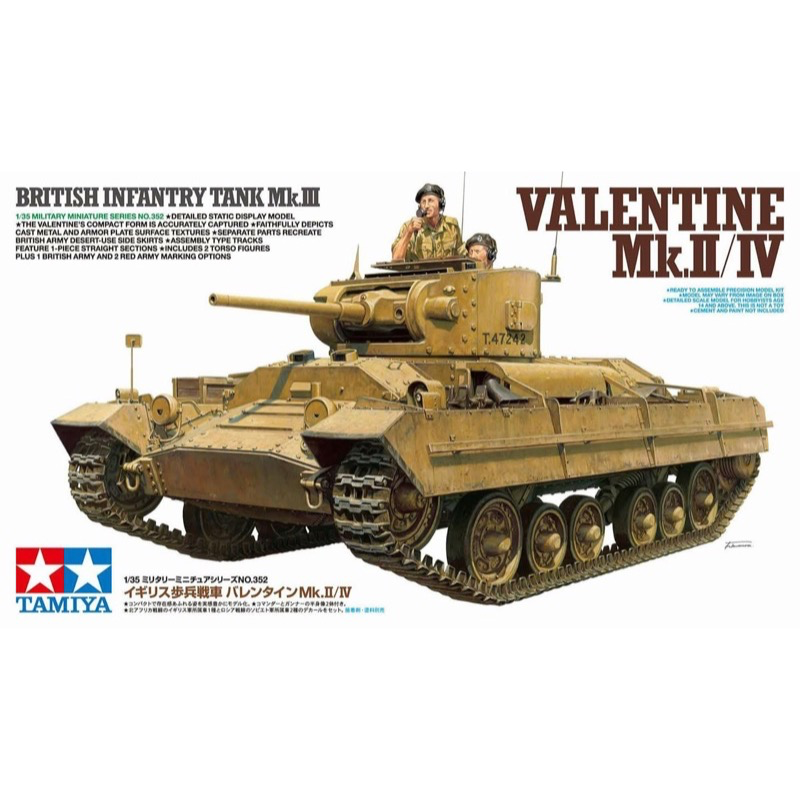
Tamiya 35352 1/35 Infantry Tank MkIII Valentine Mk II/IV
27.00
$
<strong>NEW 2017 TOOL</strong><br><br>
<p>The Infantry Tank Mk III, Valentine, was the most numerous British-built tank of the Second World War, with over 8,000 built between 1940 and 1944. It was a rare example of a private venture tank design that was accepted for mass production. Although it was produced in large numbers, the Valentine was too lightly armoured to act as a true infantry tank. Most Valentines had a two-man turret, which reduced its efficiency in combat and was slower than most cruiser tanks.</p>
<br><br>
<p>The Valentine tank was reliable and popular, and for a period in the middle of the Second World War was the main British tank. The Valentine entered service in the UK after the fall of France. It entered service with the Army Tank Brigades, where it was used as an infantry tank. During 1941 the number of new armoured divisions was outstripping the availability of cruiser tanks. To fill the gap the Valentine was issued to several divisions, and by October 1941 the 6th, 8th and 11th Armoured Divisions were equipped with the type, with 900 on strength. The 11th Armoured Division was reequipped with cruiser tanks before going into combat, but the 6th and 8th used their Valentines in combat.</p>
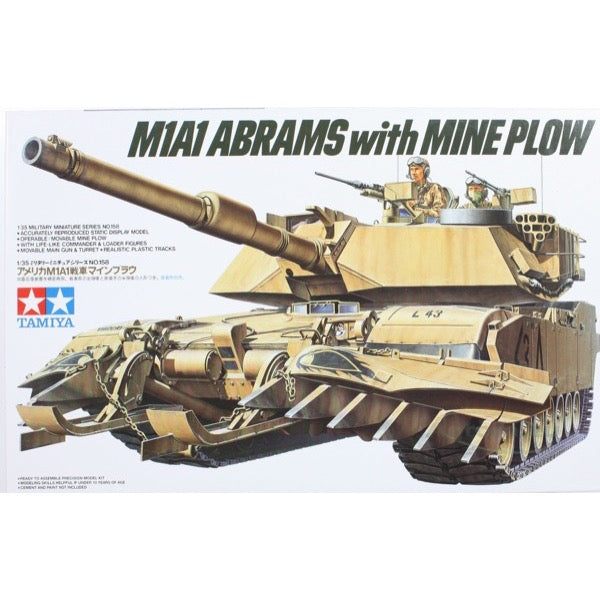
Tamiya 35158 1/35 US M1A1 Abrams With Mine Plow
22.00
$
<p>Minefields were a constant hazard for invading U.S. forces during the Persian Gulf War of 1991; chief among their countermeasures was the trusty M1A1 tank fitted with a mine plow. This plastic model assembly kit expertly recreates such an M1A1 Abrams with mine guard and plow blade equipment depicted using separate parts. Metal chains and enamel wire are included, to be employed in the recreation of the roller at the front of the vehicle. Modelers can choose to assemble the model with hatches open or closed, and will be delighted by the range of accessories, including spare wheels, ammo cases and more! The kit comes with a full body commander figure and loader torso figure to further enhance its realism.</p>
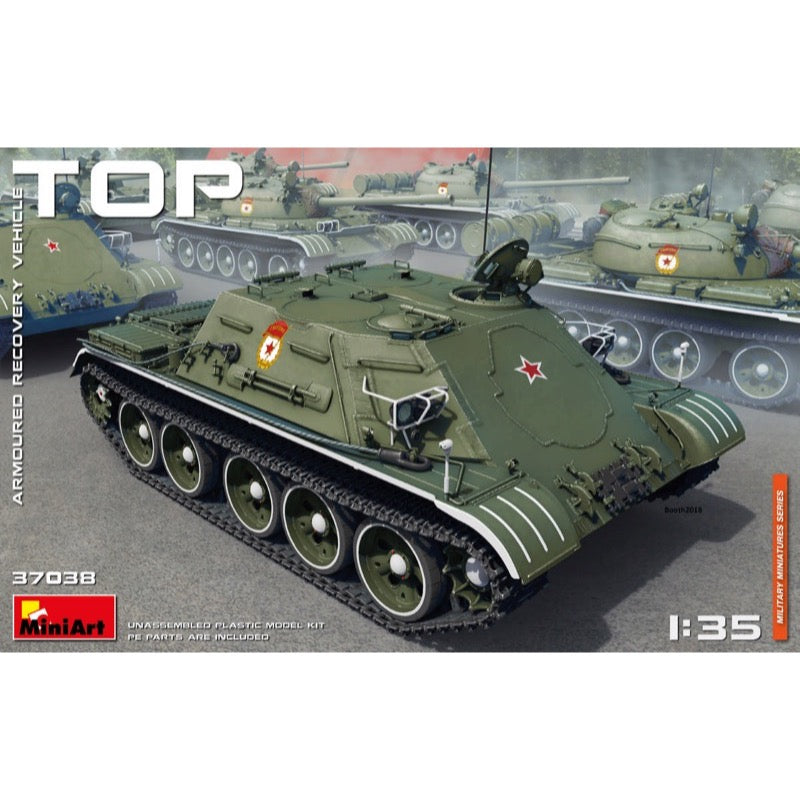
MiniArt 37038 1/35 Top Armoured Recovery Vehicle
21.00
$
<strong>Features</strong><br>
<ul>
<li>HIGHLY DETAILED MODEL</li>
<li>ALL HATCHES CAN BE POSED OPEN OR CLOSED</li>
<li>SEPARATED OMSh TRACKS</li>
<li>PHOTO-ETCHED PARTS INCLUDED</li>
<li>CLEAR PARTS INCLUDED</li>
<li>DECALS SHEET FOR 3 VARIANTS</li>
</ul>
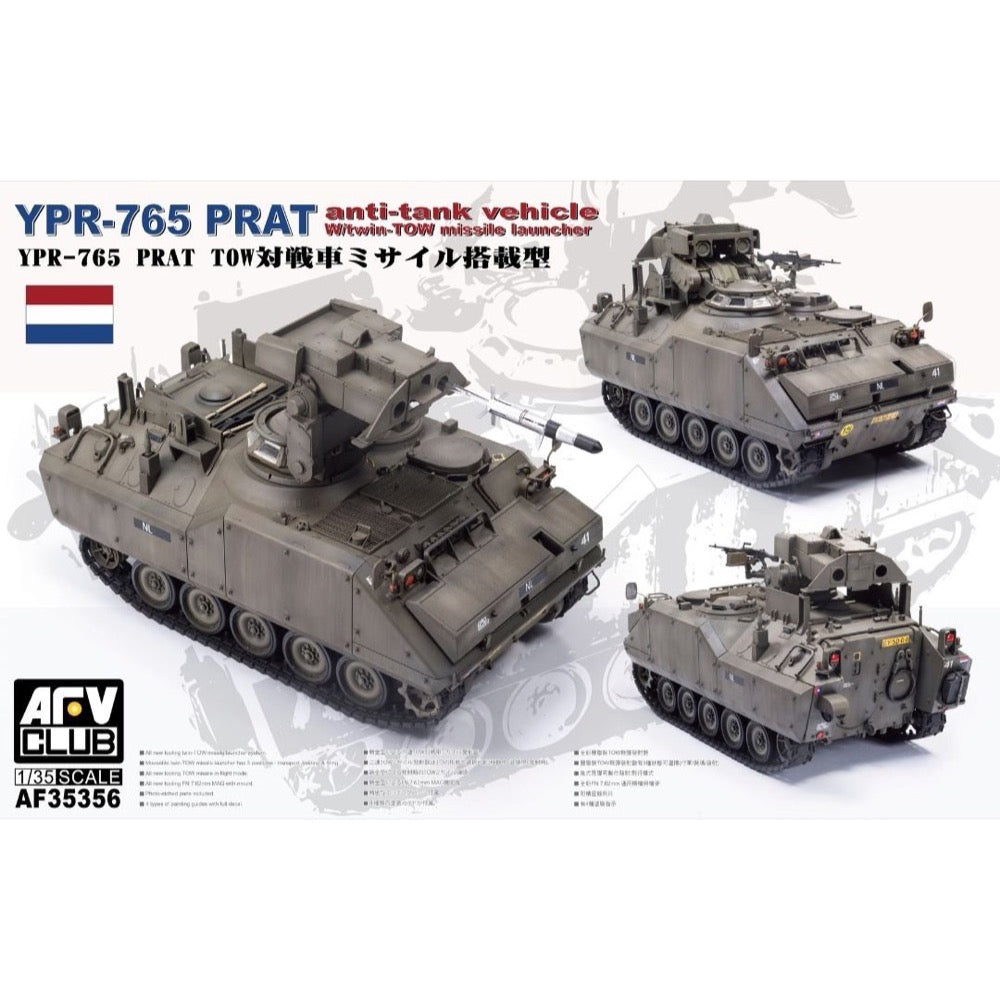
AFV 35356 1/35 YPR-765 PRAT with Tow Launcher
40.00
$
<p>The AFV Club 35356 YPR-765 PRAT with TOW Launcher in 1/35 scale is a detailed replica of the Dutch armored vehicle with a TOW anti-tank missile launcher. This model kit offers a wealth of detail, making it an ideal choice for both experienced modelers and those who are just starting out in modeling.</p>
<h3>Features</h3>
<ul>
<li>High quality details: The model is precisely made, with many small elements that faithfully reflect the actual appearance of the YPR-765 PRAT armored vehicle.</li>
<li>Realistic construction: The kit allows you to build a detailed replica of the vehicle, with an accurately reproduced drive system, chassis, driver's cab and TOW launcher.</li>
<li>Movable parts: The model has movable parts, such as the TOW launcher barrel, which allows the vehicle to be placed in various combat positions.</li>
<li>Accurate reproduction: Parts are precisely cast from high-quality plastic, which ensures high accuracy of every detail.</li>
<li>Authentic decals: The kit includes decals that allow you to reproduce the different paint schemes and markings used by the Dutch armed forces.</li>
</ul>
<h3><strong>Contents</strong></h3>
<ul>
<li>Detailed parts for assembling the model.</li>
<li>Assembly instructions with illustrations.</li>
<li>Decals to reproduce authentic markings.</li>
</ul>
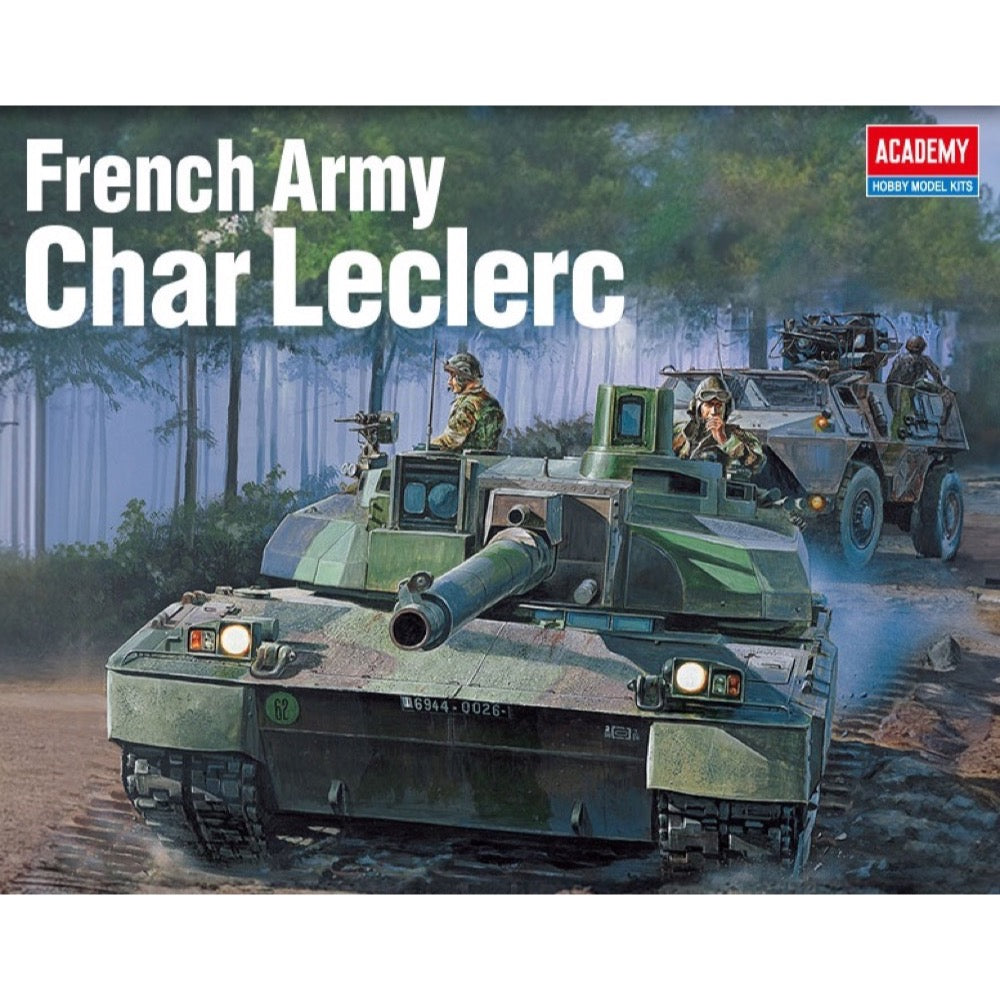
Academy 13427 1/72 French Army Char Leclerc
9.00
$
<p>The first main battle tank independently designed by France. Reboxed Ace Corporation kit. 4 sprues. 120mm CN120-26/52 main gun & 7.62mm AAT-52 NF1 machine gun.</p>
<p>The first prototypes of the French Leclerc 3rd generation main battle tank were made in 1986. Serial production started in 1992, and continues with interruptions (2017) and has resulted in the production of approx. 850 vehicles. The Leclerc tank is powered SAEM UDU V8X 1500 T9 Hyperbar engine with 1500 HP . Its primary armament is the 120mm GIAT CN120-26 / 52 gun, and its auxiliary armament is two 12.7mm and 7.62mm machineguns.</p>
<div>
<p>The Leclerc was created in connection with the French army's need for a new main battle tank, intended to replace the AMX-30 or AMX-30B2 tanks with more and more combat capabilities than other Western designs. When designing the new tank on a large scale, modern electronics were used in it, which can be seen especially in the very effective FCS (fire control system), which ensures 95% effectiveness of the first shot! Also, the gun used is in no way inferior to the German or American solutions in the Leopard 2 or M1A1 Abrams tanks. Leclerc is also highly maneuverable and mobile. However, it can be assumed that its armor is of a slightly lower quality than that of other 3rd generation western cars. Another disadvantage is the relatively high price, which in 2001 was estimated at 6.5 million. euro for one tank. The first Leclerc cars reached full combat readiness in the French army in 1995. The only foreign recipient of this vehicle was the UAE, which purchased as many as 436 units - for comparison, the French army purchased 406 units of this tank. Leclerc was used in peacekeeping missions in Kosovo (1999) and in Lebanon (2006), and in combat - in the civil war in Yemen since 2015.</p>
</div>
<p>This is an injection-plastic military vehicle model kit.</p>
<h3>Includes</h3>
<ul>
<li>5 choice of markings:
<ul>
<li>(1, 2, 3) Task Force Leclerc, KFOR, Kosovo, 1999</li>
<li>(4, 5) Leclerc T5, France.</li>
</ul>
</li>
</ul>
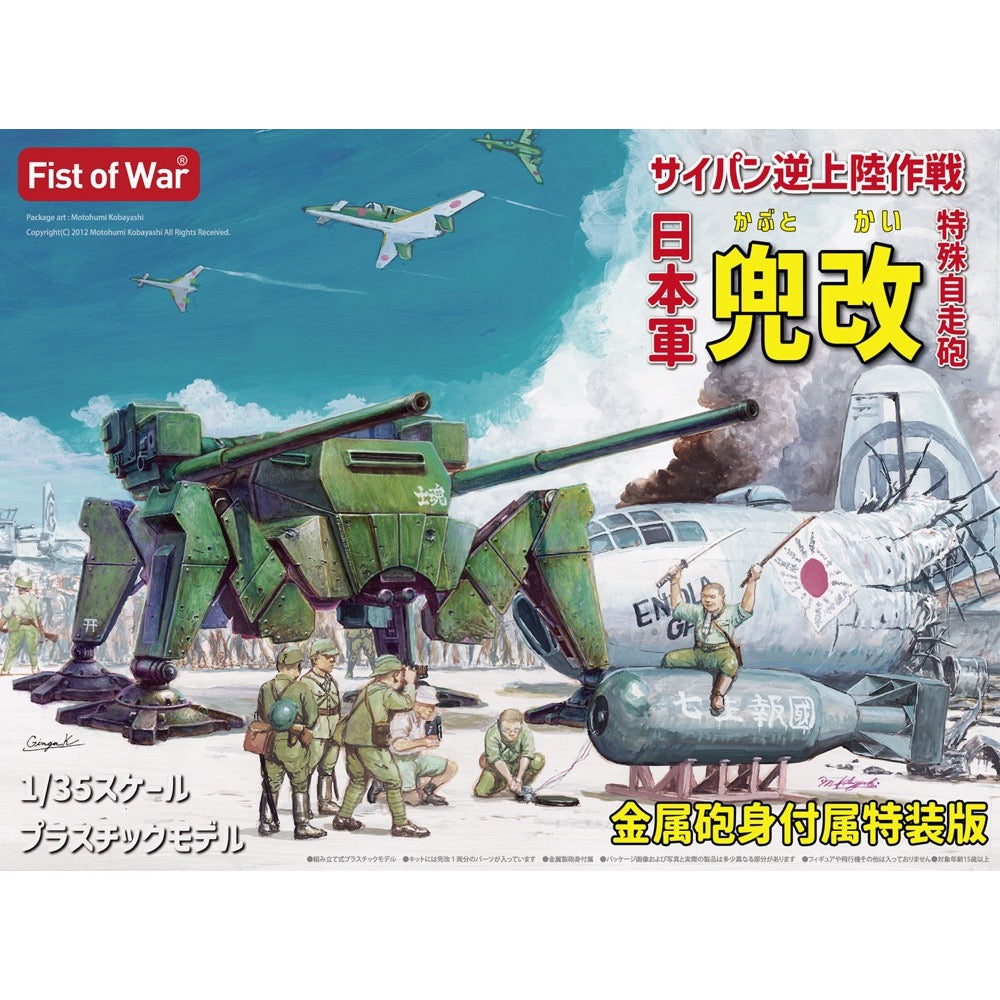
Modelcollect 47058 1/35 Fist of War I.J.A. Tactical SPG Kabuto-Kai
12.00
$
<h3>I.J.A. Tactical SPG `Kabuto-Kai` w/Metal Gun Barrel</h3>
<p>The Kabuto-Kai was a Japanese adaptation of the SdKfz 553 KaiserKäfer, developed for the Imperial Japanese Army (I.J.A.) as a tactical self-propelled gun (SPG) mech. While retaining the overall structure and silhouette of the original KaiserKäfer, significant internal modifications were made to accommodate East Asian crew ergonomics, enhance operational efficiency, and optimize performance for the I.J.A.’s doctrine of high-mobility artillery support.</p>
<p>Unlike its German counterpart, the Kabuto-Kai featured an upgraded engine, tuned for greater heat resistance and fuel efficiency, making it better suited for operations in tropical and mountainous terrain. Its 12 cm cannon, with a 15-round capacity, provided powerful direct and indirect fire support, making it a critical asset in both defensive and offensive maneuvers.</p>
<p>A total of 1,000+ units were produced, seeing extensive deployment across multiple Pacific and mainland Asian theaters. Due to its high adaptability and combat reliability, the Kabuto-Kai remained in service long after the war, with many units receiving continuous modifications for post-war military and security roles.</p>
<h3>Design Modifications</h3>
<p>While externally identical to the KaiserKäfer, the Kabuto-Kai’s internal layout was redesigned to:</p>
<ul>
<li>Optimize controls and cockpit space for East Asian crew members, improving comfort and reaction efficiency.</li>
<li>Refit engine components for better fuel efficiency and performance in hot, humid climates.</li>
<li>Adjust suspension and balance systems for enhanced maneuverability on rugged terrain.</li>
</ul>
<p>These changes made the Kabuto-Kai more suitable for high-mobility warfare in the varied landscapes of East Asia and the Pacific.</p>
<h3>Specifications</h3>
<ul>
<li>Weight: 25-30 tons</li>
<li>Armor: 40-80mm frontal protection</li>
<li>Primary Armament: 12 cm cannon (15-round capacity)</li>
<li>Secondary Armament: Twin-barreled 30mm remote-controlled autocannon (underside-mounted)</li>
<li>Engine: Modified high-efficiency engine for tropical and mountainous environments</li>
<li>Mobility System: Bipedal hydraulic leg system</li>
<li>Maximum Speed: 40-50 km/h</li>
<li>Production Quantity: 1,000+ units</li>
<li>Role: Tactical mobile artillery, mechanized fire support</li>
</ul>
<h3>Legacy</h3>
<p>The Kabuto-Kai played a vital role in mechanized artillery warfare, blending Japanese engineering refinements with the battle-proven KaiserKäfer platform. Its reliability, mobility, and adaptability ensured its long-term service, influencing future Japanese mech designs and establishing a foundation for post-war mechanized development.</p>
<p> </p>


